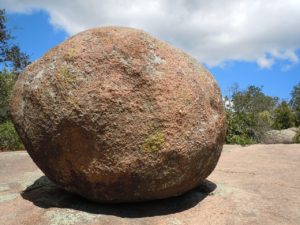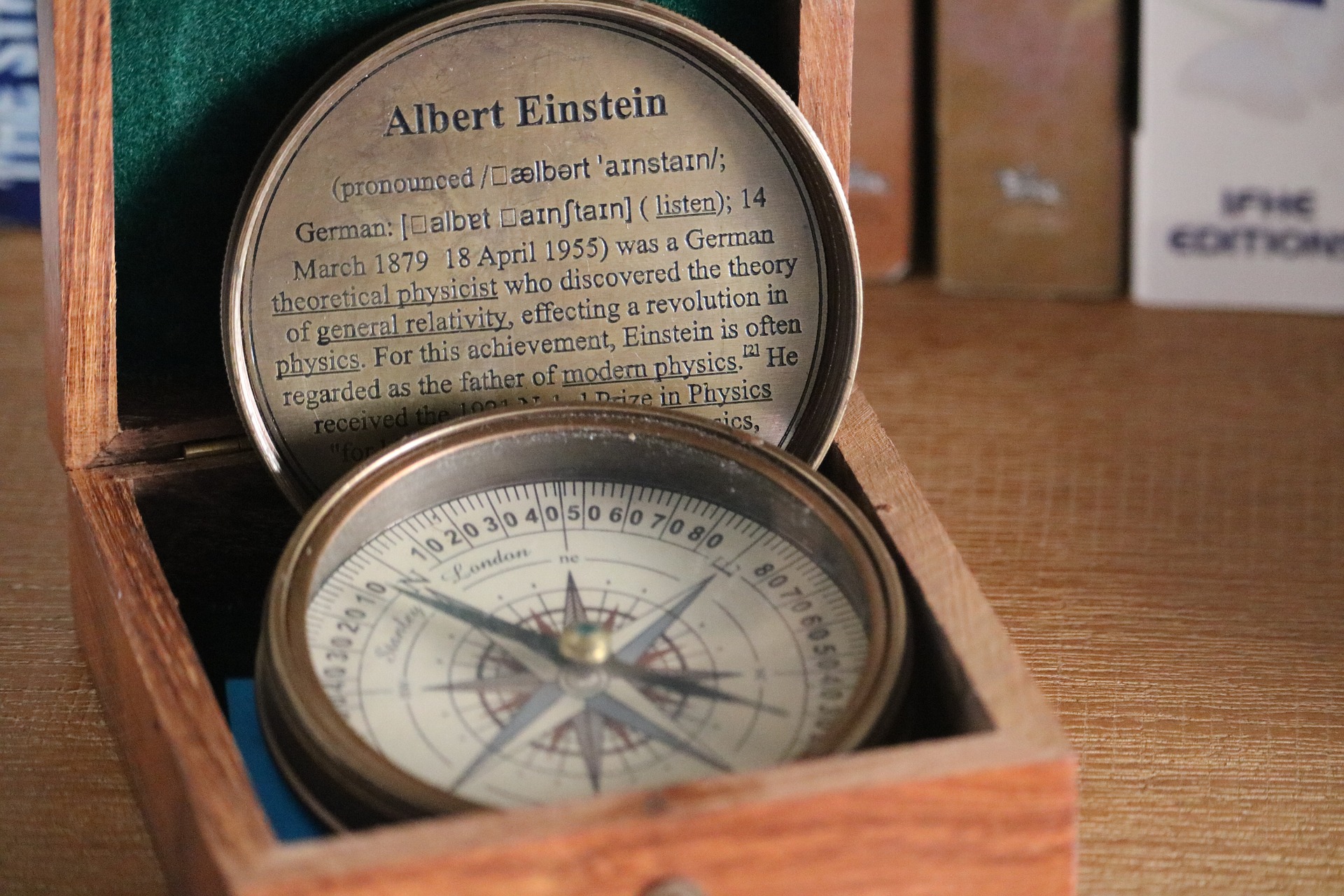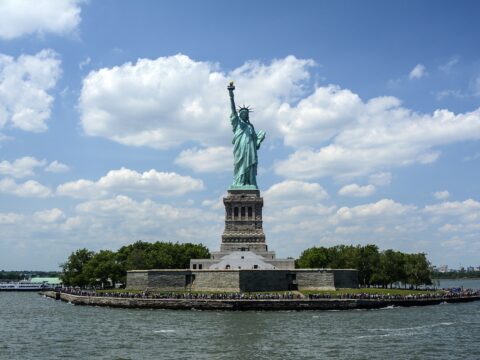 Our rights are at the center of almost every thought and activity of our lives. Even when we are not thinking about rights, we are exercising them. They are there, right in the middle of everything we think and do. This is a new thought for most of us. However, that insight leads to understanding many of the joys and pains of life. It is very revealing to look at ordinary situations through the lens of rights.
Our rights are at the center of almost every thought and activity of our lives. Even when we are not thinking about rights, we are exercising them. They are there, right in the middle of everything we think and do. This is a new thought for most of us. However, that insight leads to understanding many of the joys and pains of life. It is very revealing to look at ordinary situations through the lens of rights.
The fabric of the seat of my canoe illustrates these complexities of life with each thread representing a right we own and exercise.
Friction between people comes from our concerns about our rights and our freedom to use them. How often do phrases like “he has no right” cross our minds? Friction between nations has similar origins.
Our abilities to think, to choose and then to act are the very essence of our lives. We can consider these three (thinking, choosing, and acting) under the single idea of agency. We are the agents of our own lives. Anything that restricts or threatens our agency is an immediate source of fear, anger, or revenge. And what is agency if it is not the authority to exercise our rights?
Jealousy or resentment stemming from inequality or unfairness is another common source of friction. We often express those feelings with something like “it isn’t fair, what gives him the right to …”
Then there are the political issues, every one of which stems from concerns about our rights. We value our rights so much that they form the fabric of our lives. Even questions of right and wrong can be answered by looking at issues through the lens of human rights.
The separation of church and state is about rights. Every aspect of the issues swirling around this principle is centered on the question of rights. A thorough understanding of rights will give us a foundation from which to consider and solve the divisions among us on this matter.
Governments and Rights
Our federal government received its authority, its rights, from the states that created it. Those state governments were given their authority by the delegation of some of the rights of their citizens. Originally they were nation-states but voted to band together under the umbrella of the United States. Inherent, inalienable rights flowed upward into a democratic republic (not a democracy).
It is not news that our federal government has taken on a life of its own and has begun selective oppression of rights it was created to protect.
 So it is imperative that we maintain a constant vigilance over our rights. The authority they give us over our own activities, beliefs, health, and destiny are to be held sacred above all else. We live in a day when wealthy and otherwise powerful people want to use our talent, muscle, and resources to achieve their vision of how things should be. The most dangerous of these are the ones who suppose they know better than we do what is best for us. They are not ashamed to use every possible device to achieve the goals they have devised “for our best good.”
So it is imperative that we maintain a constant vigilance over our rights. The authority they give us over our own activities, beliefs, health, and destiny are to be held sacred above all else. We live in a day when wealthy and otherwise powerful people want to use our talent, muscle, and resources to achieve their vision of how things should be. The most dangerous of these are the ones who suppose they know better than we do what is best for us. They are not ashamed to use every possible device to achieve the goals they have devised “for our best good.”
Against such powerful foes, we stand as ordinary citizens whose only desire is to live and let live: to have a place to fix up the way we want it, to have a family and enjoy their love and friendship, and to enjoy the fruits of our own labor. These are the universal dreams of every human being. We are very much like one another. The problem is that some among us are willing to plunder their neighbors in order to reach their dreams.
Ambitious and selfish men throughout history have infiltrated their governments and abused their political offices to feast on the labor of the common man. Today is certainly no exception. The evidence lies all around us. Our challenge is more difficult and more urgent because of the cunning and secrecy they use to deceive and to legally transfer our labor to their growing kingdoms. They have even learned how to get us to vote to transfer more.
Clearly, this is a day when we must understand our rights if we are to have a hope of protecting them and passing them down to our children. First of all, we have to know what they are.
 Kinds of Rights
Kinds of Rights
I will begin with the most fundamental rights: the inalienable, immutable, natural rights. These are the ones that can be identified without argument because they are inherent within the object that holds them.
To explore rights, I will begin with the simplest objects and proceed up the hierarchy of rights and finally identify the rights of human beings in a later post. There are good reasons for this approach as you shall see.
What A Right Is
A right is a legal concept that identifies authority or power. It might be conceived as a “Power of Attorney” one issues to himself. It grants all power and authority to do anything on behalf of oneself. It can also be thought of as the authority we possess to be our own agents with power to transact any kind of business, form associations, travel, etc. Youngsters say it this way, “You’re not my boss. I’m my own boss.”
The Source of Rights
Many citizens suppose that our rights come from our laws – a serious mistake. Ambitious and dishonorable politicians will happily support that idea but the fact is there is a clear and profound basis for the source of our rights. They come directly from the physical universe we live in. Laws were written to keep the government and people from infringing on those natural rights.
The founding fathers did a lot of pondering over the wording of our founding documents. The statement of rights in the Declaration of Independence reads “… certain unalienable rights, that among these are life, liberty and the pursuit of happiness.” Some historians talk about “three rights” but the document reads “among these are …” making it clear that there were other rights in mind.
The phrase “pursuit of happiness” was not the wording our founders would have liked to use. Were it not for the fact that slaves were often considered the property of their owners, the three rights mentioned would have read “life, liberty and property.”
A right is an authority over oneself. So let’s see what kinds of authority we can find.
 The Rights of the Rock
The Rights of the Rock
The single most important thing we can learn about human rights can be learned from a rock. A common boulder has inherent, immutable and inalienable rights. We don’t usually think of that but this exercise of identifying these rights is more helpful than expected. So what are those rights? First of all, a rock has existence: it’s a form of a “right to life”. A stone takes up space; it has a home (wherever it finds itself). A stone is denser than most other things. Whatever a stone possesses or can do it has a right to be and do.
[click_to_tweet tweet=”Stones have rights. Whatever a stone can do it has a right to do, just like you and me. These are inalienable rights. The proof of that is this: to infringe its rights you have to do violence to it. Likewise for us humans. https://tinyurl.com/y727dcyy #JackPemBlog #humanrights” quote=”These are inalienable, immutable and inherent rights. The proof of that is this: you cannot take any of these rights away from a stone. If you should decide to make the attempt you will find that you must reduce the stone to something less than it was. The more rights you violate the more you destroy the rock. The same is true for all rights of all things.”]
That is the single, most important thing you can learn about rights. Never forget it. To take away a human right is to reduce that human to something less then he could be.
The Rights of the Tree
We can learn more about rights from trees. A tree has the power and the authority to live, to have a place, to push aside rocks, to gather sunlight and air, to grow, mature, reproduce and also, in at least a rudimentary sense, to protect itself. These rights are inherent, inalienable, and immutable. The proof of that is this: you cannot deny even a part of one of them without doing some degree to violence to the tree. This is the single, most important thing we must learn about rights: when limited in any way, their owner suffers.
 The Rights of the Beaver
The Rights of the Beaver
So we move up the “rights food chain” to the clever and energetic beaver. The beaver has all the rights of the tree and the rock and many more. These include the right to harvest both rocks and trees, to build beaver dams to impound water, to construct a lodge, travel, court, mate, produce a family, and to protect himself, his family and his property, even by use of violence if necessary. In short, he has the natural authority to do all things beaver-ish. If he can do it he has the natural right to do it. For those who may not be familiar with beaver abilities, here is a 33 second video of a beaver exercising his rights to cut down trees for food, lodging and dams.
So we notice that to infringe any of these rights, to reduce any of the beaver’s authority over his life and his circumstances, is to reduce the beaver to something less than he would otherwise be. If we restrict his access to trees and branches he will have to work harder to be a beaver. If we deny his access to trees and branches, he will die and lose his ultimate right: the right to life. It is impossible to restrict the beaver’s rights without doing some degree of violence to the beaver-ness of the beaver.
Rights and Freedom
 We can begin to learn the basic lessons of freedom here so we ask the question: Does a beaver have the right to be free? To answer that question we only need to re-read the previous paragraph. All those things belong to the freedom of the beaver. He cannot exercise the authority of his rights without the freedom to do so.
We can begin to learn the basic lessons of freedom here so we ask the question: Does a beaver have the right to be free? To answer that question we only need to re-read the previous paragraph. All those things belong to the freedom of the beaver. He cannot exercise the authority of his rights without the freedom to do so.
There are other questions. Can you move a beaver that is flourishing in an ideal place to a less ideal place without impact on its freedom? What kind of justification must you have to infringe the rights of a beaver? Do humans have the right to take prisoners and set up a beaver colony in a zoo?
These questions lead us back to the “rights food chain”. Why, in nature, do we find the food chain where creatures violate the most basic right, the right to life, of other creatures? That’s the hierarchy of rights. Many Jews and Christians believe that when the earth is restored to its original state before the fall of Adam, this constant violation of the right to life will be eliminated.
The Hierarchy of Rights
The hierarchy of rights is sometimes called the “order of creation”. It is an important part of understanding rights. The tree has rights superior to the rock, and the beaver to the tree’s. Otherwise, they cannot be all they can be. The nature of our universe describes and demonstrates this hierarchy. When we see that hierarchy we could think that trees have greater value than rocks. Or the beaver may suppose he is more important than trees. We can dismiss this one by reminding the beaver that there are few things more important to him than trees.
The founders said, “all men are created equal”. But I am certain that if we pressed them on this point they would admit that it is not precisely true. Some are smarter, some are more agile, etc. But they did intend that we all be equal under the law. That was their goal for the entire revolution. Arriving there required uprisings, battles, the Declaration of Independence, and the most incredible constitution in the history of the world. There can be no mistake there.
So that difficult, expensive, and bloody effort was to put citizens on an equal footing in relation to their government. It was not to put citizens on an equal footing in relation to one another. That may seem a fine line but it is a crucial one as we shall see.
Equal Protection and Equal Opportunity
The law must give every citizen equal protection in the exercise of his rights. This is the essence of “equal protection under the law”, an American truism. To improve yourself and your circumstances, you have to be free to exercise your rights. The law discourages and punishes citizens who violate the rights of others through theft, trespass, etc. That’s equal protection.
The government cannot get into the business of dividing citizens into groups and protecting some rights more than others. This is, however, the intent of laws meant to give citizens “equal opportunity.” There are several problems with the “equal opportunity” idea. First, who shall judge what is “equal” for two different people with different talents, living in different places and circumstances? Second, how shall we define opportunity? Third, how can we deliver opportunity to one without simultaneously infringing the opportunity of others?
Finally, and this may be the most important issue: how can a law define a class of people that are to be given equal opportunity and not violate the most fundamental principle of our freedom: “equal under the law”?
These are the difficulties with all affirmative action laws. They set up a class in a supposedly classless society. They discriminate against one class in order to bless another. And they create political leverage. All affirmative action laws create a voter block for the use of unscrupulous politicians.
 Human Rights
Human Rights
The next post on this topic will cover the rights unique to us humans – the human rights. Meanwhile, never forget that the most important thing about your rights you can learn from a rock — you can’t infringe its rights without doing damage to it. The same is true for me and you.




